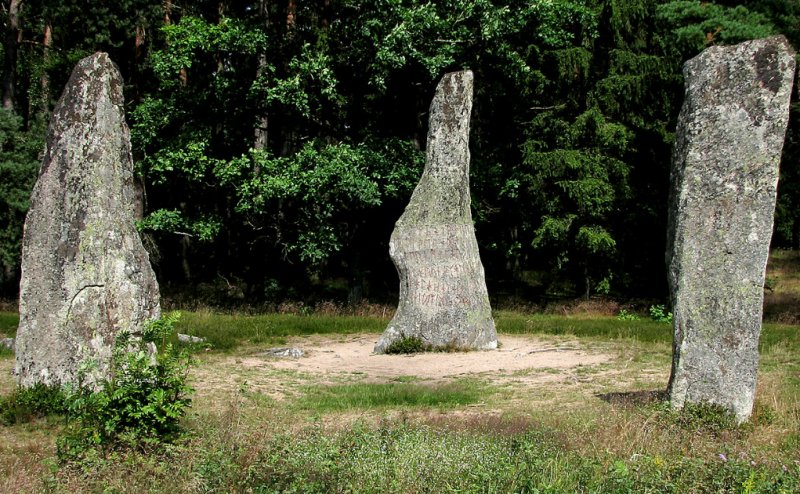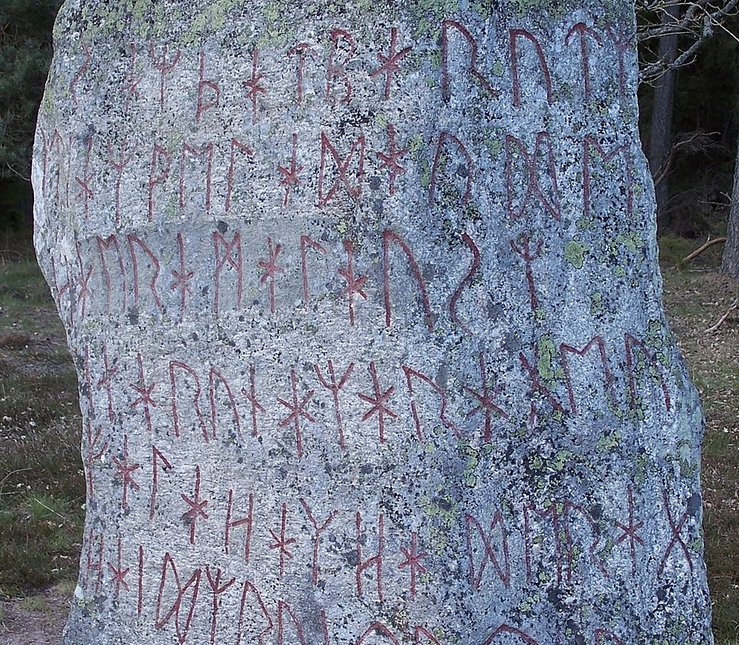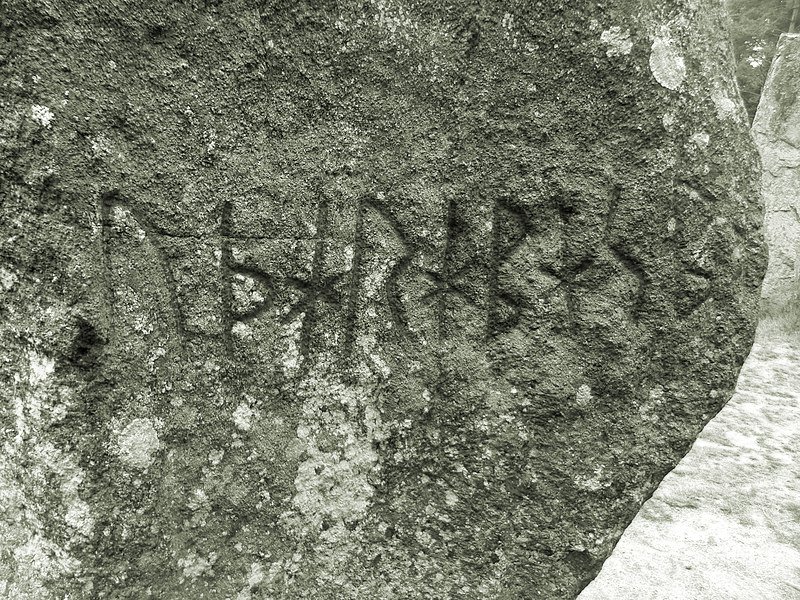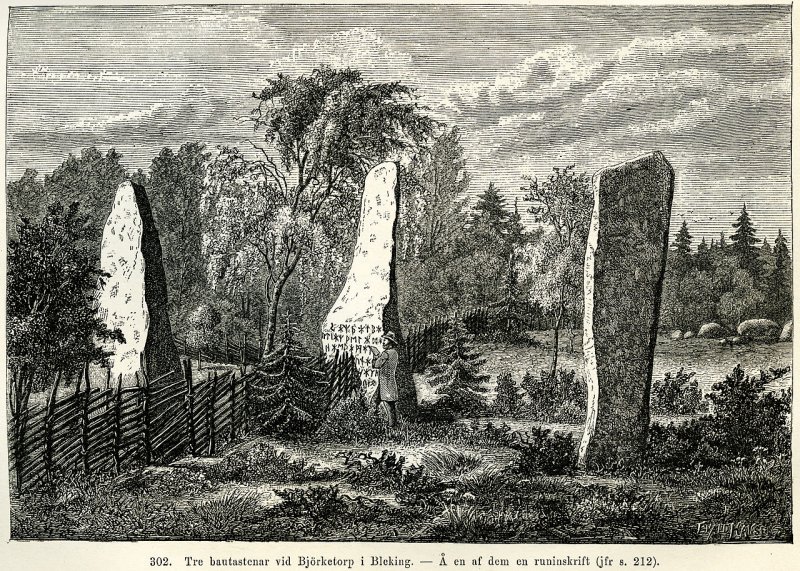Björketorp Runestone With Frightening Message Is Still Untouched In Blekinge, Sweden
A. Sutherland - AncientPages.com - The Björketorp Runestone in Blekinge, Sweden, is part of a burial ground with menhirs standing alone and forming stone circles.
Dated to about 400-700 AD, the standing stone has never been moved, so it remains in its original place.
Björketorp Runestone in Blekinge, Sweden. Image credit: Joachim Bowin - CC BY-SA 3.0
Perhaps it is not so strange that the Björketorp Stone remains in its original place.
Who dares to move a stone where there is a curse engraved with runes?
Rune-magic formulas were common in the Viking Age. The curse formula on the Björketorp Runestone says that ' "whosoever breaks down or in any way 'disturbs the holy site is cursed unto death by the deceptive power of the runemaster." The magical means were used by the unknown runemaster to record on this stone the death sentence and to warn.
The runestone stands in the forest clearing on the edge of a vast, old burial ground, and is accompanied by two other slightly lower menhirs with no inscriptions. No doubt, the three of them form Sweden's impressive landmark.
A burial ground - consisting of eleven clearly visible ancient remains - dates to the Iron Age. In addition, nearby, there are also two-judge rings, a round and a four-sided stone setting, and seven lower raised stones. The site is located at the intersection of three villages Listerby, Björketorp, and Leråkra.
The curse-like inscription covers one of the world's tallest runestones, measuring 4.2 m. One can say the stone is not only the tallest but also mysterious because of the text it tries to convey.
Björketorpsstenen (Björketorp Stone) at Björketorp, in Ronneby, Blekinge, Sweden - Image credit: Henrik Sendelbach - CC BY-SA 3.0
The runestone and the two others were already mentioned in the 15th century. They namely served as a boundary mark between the three parishes of Edestad, Listerby, and Hjortsberga. At that time, they were called" Galta Stene."
It's worth mentioning that the three menhirs we talk about are the so-called "bautastenarna" (Bauta Stones). Bauta (in prehistoric (Old Norse) means upright memorial stone without inscription. The word is no longer an archaeological term, but today means 'upright stone.'
Only one of the three bauta stones bears a runic inscription created from runes belonging to the older Runic row. In Blekinge, at least five such ancient runestones are known and are dated to the 5th - 6th AD. The inscription on the Björketorp Runestone has no personal name.
Unknown Author Of Curse-Liked Inscription
An unknown prehistoric artisan covered the stone with an inscription, using the oldest form of the runic alphabet, the Elder Futhark (150 - 800 AD), with 24 runes.
The Elder Futhark Runic alphabet was a writing system used by Germanic people for Northwest Germanic dialects during the Migration Period (300–800 AD) or even later. From the 2nd to the 10th centuries, inscriptions were found on various ancient artifacts, including amulets, jewelry, weapons, tools, and runestones in Scandinavia.
The Runestone of Björketorp also contains a mysterious "curse," which does not promise well for an individual who has problems in his mind.
The stone was probably intended to safeguard the burial ground from grave robbers.
The inscription reads: Obverse: hAidz * runo • ronu • fAlAhAk • hAiderA • ginArunAz • ArAgeu • hAerAmAlAusz •utiAz • welAdAude • sAz • þAt • bArutz Obverse: uþArAbA * sbA
It translates as follows:" Mysterious, powerful runes I carved here. Powerful runes. Eternal anger should torment The One who desecrates this monument. He is to die a homesick death. I speak his doom."
The Runestone stands on a burial ground in Björketorp, Listerby Parish, Ronneby municipality, Blekinge, Sweden. Image credit: Achird - CC BY-SA 3.0
Another little different translation is:
"The secret of mighty runes I hid here, powerful runes. Whoever breaks this memorial will be constantly tormented by anger. Treacherous death should hit him. I trace corruption..."
On the back of the stone is written::
"Sinister prophecy" (or" Ominous prophecy."
It is an old curse that was once called "galder."
The purpose of this runic inscription has long been debated. Scholars are not in agreement on the purpose of the Runestone.
The Björketorp runestone (DR 360) in Listerby parish, Ronneby municipality, Blekinge, Sweden. Woodcut by Evald Hansen (1840–1920), figure 302 on Page 211 of Sweden's hednatid (1877) by Oscar Montelius. Public Domain
It has been suggested that the Runestone is grave and that the curse is intended to protect it. However, in 1914, archaeological excavations did not present any finds connected with the runestone or neighboring stone circle. Also doubtful is whether the Björketorp Stone is a grave or a so-called Cenotaph, i.e., a burial facility for a person whose remains have been lost or buried elsewhere.
One theory is that the Björketorp Stones in Blekinge stand on an old cult site from the 600s dedicated to the god Odin (or fertility). Another possibility is that the standing stone once marked a border between the Swedes and the Danes.
Even today, we know little about the Björketorp Stone in Blekinge.
Additionally, we can add that On the ridge further north in the area, there are many ancient remains from both the Bronze and Iron Ages. These findings attest to a rich ancient settlement. In a gravel pit directly east of the burial ground, archaeologists found a funerary urn next to a remnant stone. The dead man was burned, and his bones were placed in the urn.
A sword, spear, and knife were found next to him in his tomb.
Written by – A. Sutherland - AncientPages.com Senior Staff Writer
Updated on January 21, 2024
Copyright © AncientPages.com All rights reserved. This material may not be published, broadcast, rewritten or redistributed in whole or part without the express written permission of AncientPages.com
Expand for referencesReferences:
Hofberg Herman, Genom Sveriges bygderKarlén, L. Runstenar i Sverige
The Swedish National Heritage Board (Swedish: Riksantikvarieämbetet; RAÄ)
Barddal, Jóhanna: Björketorpstenens "utiar weladaude". Sydsvenska ortnamnssällskapets årsskrift 1998
More From Ancient Pages
-
 ‘Joyeuse’ – Legendary Sword With Relics Of Saints Was A Private Treasure Of Emperor Charlemagne
Artifacts | Dec 24, 2021
‘Joyeuse’ – Legendary Sword With Relics Of Saints Was A Private Treasure Of Emperor Charlemagne
Artifacts | Dec 24, 2021 -
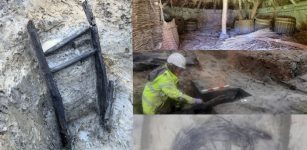 Incredibly Rare Iron Age Wooden Objects Discovered In 2,000-Year-Old Waterlogged Site In The UK
Archaeology | Jan 21, 2023
Incredibly Rare Iron Age Wooden Objects Discovered In 2,000-Year-Old Waterlogged Site In The UK
Archaeology | Jan 21, 2023 -
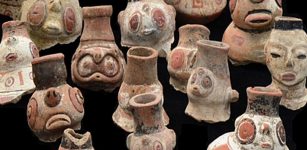 Ancient DNA Tells Story Of Caribbean’s Early Humans
Archaeology | Dec 28, 2020
Ancient DNA Tells Story Of Caribbean’s Early Humans
Archaeology | Dec 28, 2020 -
 3,000-Year-Old Stone Scarab Seal Depicting A Pharaoh Discovered In Israel
Archaeology | Dec 2, 2022
3,000-Year-Old Stone Scarab Seal Depicting A Pharaoh Discovered In Israel
Archaeology | Dec 2, 2022 -
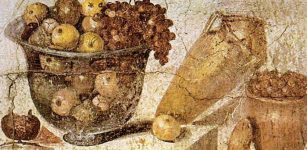 Food In Ancient Roman Funerary Meals Was Similar To That Consumed During Life
Archaeology | Aug 30, 2022
Food In Ancient Roman Funerary Meals Was Similar To That Consumed During Life
Archaeology | Aug 30, 2022 -
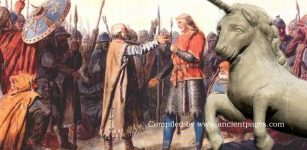 Vikings’ Unicorn Bluff Fooled Europeans For Hundreds Of Years
Ancient History Facts | Apr 24, 2018
Vikings’ Unicorn Bluff Fooled Europeans For Hundreds Of Years
Ancient History Facts | Apr 24, 2018 -
 Birth Of Good And Evil In Iroquois Beliefs
Featured Stories | Sep 23, 2019
Birth Of Good And Evil In Iroquois Beliefs
Featured Stories | Sep 23, 2019 -
 King Geirrod Betrayed His Brother Agnar And Sent Him To Die But Justice Finally Prevailed
Featured Stories | Feb 14, 2024
King Geirrod Betrayed His Brother Agnar And Sent Him To Die But Justice Finally Prevailed
Featured Stories | Feb 14, 2024 -
 Different Story Of Odin’s Sons Balder And Hoder In Norse Mythology
Featured Stories | Nov 26, 2020
Different Story Of Odin’s Sons Balder And Hoder In Norse Mythology
Featured Stories | Nov 26, 2020 -
 Ancient Monuments The World Is Not Allowed To See – Forbidden Zone – Part 2
Ancient Mysteries | Aug 27, 2020
Ancient Monuments The World Is Not Allowed To See – Forbidden Zone – Part 2
Ancient Mysteries | Aug 27, 2020 -
 Negev Desert’s Ancient Site Tells Story About Humans, Neanderthals Coexistence
Archaeology | Jun 19, 2021
Negev Desert’s Ancient Site Tells Story About Humans, Neanderthals Coexistence
Archaeology | Jun 19, 2021 -
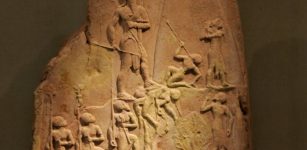 Did Climate Change End The Akkadian Empire?
Civilizations | Jul 17, 2019
Did Climate Change End The Akkadian Empire?
Civilizations | Jul 17, 2019 -
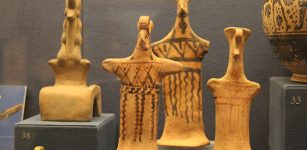 Mycenaean Culture Used Lignite For Their Kilns 3,000 Years Ago – Surprising Discovery Reveals
Archaeology | Jan 25, 2022
Mycenaean Culture Used Lignite For Their Kilns 3,000 Years Ago – Surprising Discovery Reveals
Archaeology | Jan 25, 2022 -
 Mysterious Time Slips Near An Ancient Church – Reported
Featured Stories | Oct 23, 2018
Mysterious Time Slips Near An Ancient Church – Reported
Featured Stories | Oct 23, 2018 -
 Sibylline Books: Ancient Prophecies Destroyed By Fire
Featured Stories | Feb 17, 2016
Sibylline Books: Ancient Prophecies Destroyed By Fire
Featured Stories | Feb 17, 2016 -
 Fossils, Fires And Focus On Early Human Activity In Southeast Asia Jungles
Archaeology | Oct 14, 2024
Fossils, Fires And Focus On Early Human Activity In Southeast Asia Jungles
Archaeology | Oct 14, 2024 -
 The Red Dragon Of Wales – Ancient Symbol Dating Back To Roman Times
Ancient Symbols | Jan 3, 2018
The Red Dragon Of Wales – Ancient Symbol Dating Back To Roman Times
Ancient Symbols | Jan 3, 2018 -
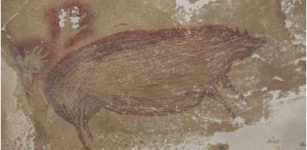 World’s Oldest Known Cave Painting – 45,000-Year-Old Depiction Of Wild Pig Discovered At Leang Tedongnge Cave
Archaeology | Jan 14, 2021
World’s Oldest Known Cave Painting – 45,000-Year-Old Depiction Of Wild Pig Discovered At Leang Tedongnge Cave
Archaeology | Jan 14, 2021 -
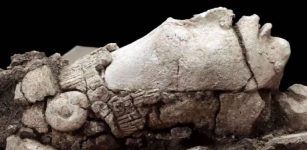 1,300-Year-Old Mayan Maize God Sculpture Found in Palenque, Mexico
Archaeology | Jun 2, 2022
1,300-Year-Old Mayan Maize God Sculpture Found in Palenque, Mexico
Archaeology | Jun 2, 2022 -
 The Bushido Code: Centuries-Old Unwritten Code For Ideal Samurai Warrior
Featured Stories | Dec 26, 2016
The Bushido Code: Centuries-Old Unwritten Code For Ideal Samurai Warrior
Featured Stories | Dec 26, 2016

